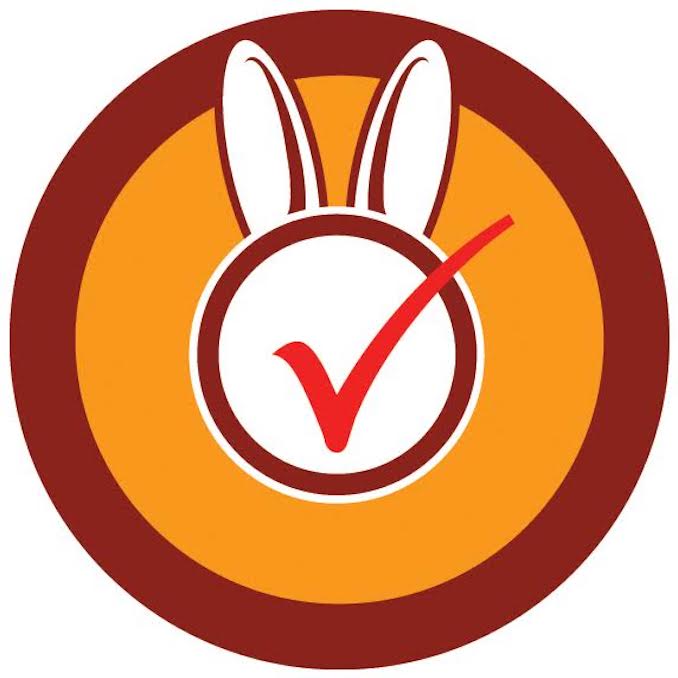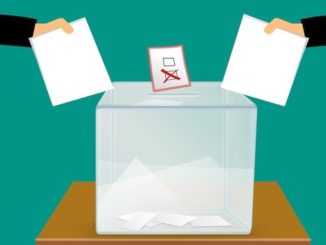Last year’s municipal elections were unusual, to say the least. Premier Ford’s unprecedented intervention in an ongoing election through the city into chaos. It was history in the making.
The compression of 47 wards down to 25 created an even bigger field of candidates in each ward, with some wards hosting as many as 19 competitors for a single seat – and with such a divided field, “vote splitting” reared its ugly head once again.
If you’ve voted in Toronto before, you’re likely familiar with vote splitting – seeing an unpopular candidate win with, in some cases, as little as 27% of the vote, because other candidates split the opposition vote between multiple candidates.

But vote splitting isn’t an inevitable feature of democracy. In fact, the solution is not only well-known – it is, as of a few years ago, officially accepted in Ontario. It’s ranked ballots, and if RaBIT (Ranked Ballot Initiative of Toronto) has its way, it’ll be coming soon to a municipal election near you.
We sat down with Michael Urban, one of RaBIT’s board members, for a wide-ranging discussion about why Toronto is ready for – and urgently in need of – ranked ballots. This interview has been lightly edited for clarity and concision.
So why a ranked ballot?
All around the world, we’re witnessing a lack of satisfaction with the current political system. This is unsurprising to a lot people who have looked at our electoral system and recognized that it has significant problems – for example, the candidate with the most support is not guaranteed to be the winner. We have a system that rewards divisive rhetoric, tactics, and strategies around wedge issues.
We have a system where because a lot of voters feel that their preferred candidate doesn’t actually have a chance of winning, they have to vote for the “lesser of two evils”. Which is a dispiriting ask for people. I think it turns them off politics. I think the way the current system incentivizes divisive rhetoric and strategies also turns off people.
It’s not even just implicit in the system, it’s become explicit. If you like at the research, negative advertising – and campaigners know this – doesn’t really change minds in terms of switching votes. It just drives down turnout among the supporters of the target. And this is an explicit strategy, which seems highly problematic to me if you’re trying to provide an issue-focused politics.
But there’s a solution. Now, ranked ballots are not going to fix all these problems. But I think they shift the incentives for politicians in a way that is helpful and very positive.
By eliminating the possibility of vote splitting, you eliminate that danger where voters get turned off by the fact they can’t vote with their heart and have to do this sort of obscure strategizing or game theory about who has the best chance, and do I like them better than the other guy – it’s a ridiculous and disheartening ask. You end up with situations where people are guessing about who is most likely to win and that will affect how they vote, which is not what you want an election do. You want elections to reveal people’s preferences, not their best guess at their best strategy given those underlying preferences.
So eliminating vote splitting gets rid of that, and gives people an opportunity to provide their honest input.
In addition to that, with the current system you’re not guaranteed to get the candidate who has the most support – with ranked ballots you do. I think that’s really important. If you’re a democrat, that by definition improves the outcome because you’re getting the result that reflects the will of the people for better or worse.
It also incentivizes a more positive politics – if you don’t have to worry about vote splitting, you don’t have to scare people away from voting for other candidates. You can still benefit from those voters. So it reduces the incentive to be negative which reduces the effect of turning people off politics. But it also incentivizes you to broaden your electoral coalition, because you need the positive approval of 50% or more of the vote.
I think that’s important because it engages people – they know the candidate who ones is the one that most people agree with. That means their vote makes a difference! And it produces policies which have greater support and buy-in. Whether those are the right policies or not, they’re the democratic policies.
We’re going to be using a new messaging campaign in a few weeks, and the message is: “make voting better”. And the reason that ranked ballots make voting better is because give you better candidates, better campaigns, and better government.
By eliminating vote splitting, you also reduce the power of backroom political operators who have such influence on how candidates are selected in the first place. They can’t bully new voices, voices from marginalized communities, into leaving based on fears of vote splitting, for example. So if those candidates are strong candidates, as happened in Minneapolis, you’ll get candidates who would not have been the choice of the “machine” but who the voters prefer once they find out about them. And they wind up getting elected.
Also, knowing that’s possible, it draws new candidates into the race who wouldn’t have gone into the race otherwise.
For example, Arielle Kayabaga – the first black woman elected to council in London, Ontario – has said she wouldn’t have run if not for ranked ballots. The woman who was selected by the electorate would not have even offered herself up if not for a system which opens up this whole nomination process. It borders on criminal to deny the people those choices.
And when representatives are elected with ranked ballots, they know they have majority support. We had a former board member who ran for trustee and won a few years ago. And he won with 21% of the vote in a field of ten candidates, and he said it really affected him when he was serving, because he didn’t really have the confidence that he represented what the majority wanted.

You mentioned a race in Minnesota earlier. Can you elaborate on a few real-world examples of a ranked ballot system?
Betsy Hodges became mayor of Minneapolis in 2014. My understanding is that she was not the first choice of the Democratic-Farmer-Labour party. There was another guy – kind of a standard, middle aged white guy, and it was “his turn” to be the candidate for mayor and the party machine was behind him. Normally what would have happened is that Betsy would have been pushed out of the race, but they couldn’t use vote splitting as a cudgel against her. And when voters got to meet her, they decided they liked her better – and she wound up winning.
Given that it’s impossible to look back and “re-run” an election to say “oh, it would have unfolded differently with ranked ballots”, one thing you can look at is how candidates act. And there are two great examples of how ranked ballots change behaviour.
One was the Democratic primary for governor in Maine in 2017 and the other was race for mayor in San Francisco in 2017. In both races, you had candidates who were not the front runners who represented a more progressive wing of the electorate, saying “you know what, if we both attack each other, we’re gonna drive down each other’s vote and split it – but with a ranked ballot system we can be collaborative.” So they did advertising where they were both in the advertisement, saying things like “I want you to vote for me, but she’s not so bad so put her as your second choice”. I think a lot of people found that really refreshing. That connected with a lot of people’s common-sense understanding of the way the world actually is.
And it made running for these candidates a much better experience. We often neglect that a lot of good people don’t get involved in politics because running for office and being in office is a terrible experience, especially for women and people from marginalized backgrounds who receive a disproportionate amount of the vitriol and the negativity. A lot of that negativity is manufactured by the system. By removing that, you make it possible for people to say “we’re pretty similar, we agree on a lot of things, we differ on this or that, so if you mostly agree with me but like her better, mark me second”. So you’ll get more and better candidates willing to run because of that.
Tell me a bit about RaBIT? When was it founded, why, etc?
Dave Meslin put this train on the tracks. He’s been working on bringing ranked ballots to Toronto since 2006. It’s been a long slog for him. I got involved in fall of 2013, just after moving back to Toronto. At that point RaBIT didn’t exist as an official organization – it was just a group of people. They had just won a big victory at city hall – with a ⅔ majority, they’d got City Hall to vote in favour of asking the province to change the law to allow municipalities to use ranked ballots.
Since 2014 we’ve been operating with a very active board and several volunteers.
In 2013 the focus was on the city, but after getting that motion passed, then it shifted to the province. And in 2014 the province responded – both the NDP and Liberals made motions to allow Toronto to use ranked ballots. Then the Liberals in 2014 put into their platform that they were going to allow ranked ballots at the municipal level. They won that election and then moved forward with it. It took them about two years to introduce that legislation, but by the fall of 2016 legislation was passed and the regulations had been issued. So as of Sept 2016 it became possible for cities to use ranked ballots.
At that point RaBIT had been in contact with Toronto election services and they’d told us they needed two years to prepare for a ranked ballot election. At that point there was a surprise motion from Councillor Di Ciano in October which confused a lot of councillors, and it was essentially an anti-ranked ballot motion. And it did get majority support. There were a couple of votes in December which confirmed that the support wasn’t yet there.
But in the meantime, London decided to move ahead with ranked ballots. We were very happy about that, and along came this most recent election, and our main aim was to get pro-ranked ballot candidates election. We ran a pledge campaign – 98 candidates signed the pledge, and of those 98, we managed to elect 13 councillors and the mayor. So on a council of 26 people, 14 are on the public record of supporting ranked ballots. We’re pretty pleased with that result, so now our objective is to hold them to account.
What is the next step to making a ranked ballot system a reality?
So legally there’s a small number of steps. The city needs to hold a couple of events within a specified timeline providing essential information to the populace about the costs, how it would work, etc. The requirement in the legislation are actually fairly minimal. They’re clearly designed more for small towns, so were Toronto to move ahead, we expect it to be somewhat more than minimum. But all that needs to happen is a bylaw passed by city council directing election services to do it in 2022.
It needs to be passed on or before May 1st of 2021. Our objective would be to get that bylaw passed with plenty of time (at least two years). London passed theirs right on the deadline and their election services was able to deliver the election just fine. But our objective is to give Election Services Toronto the full two years.
Are there active measures you are taking now and how would someone get involved?
One thing we’re doing right now is meeting with Councillors to ensure that everyone who pledged has influence in terms of getting to that by-law vote – what staff reports need to be requested, what due diligence needs to be done, we need to make sure that all the councillors are satisfied that all the t’s have been crossed. So we’re getting that input from Councillors.
In terms of things volunteers can do – finding ways for people to get involved – there’s a variety of easy things they can do. First is sign the petition on our website. One reason the Liberals put ranked ballots in their platform in 2014, which was a key step to get us here, was that we managed to assemble a petition calling on provincial leaders to do that garnered about 8,500 signatures. Our current petition has just under 2,000, which is pretty good but not nearly 8,500. The more people who sign that the better – once you get over 5,000, politicians start to really take notice (especially at the municipal level).
Following us on social media, helping us spread the word on social media – we’re active on Twitter and Facebook. Sharing the info we put out, invitations to events, petitions, etc, sharing that with networks is a really big help.
***
Interested in knowing more about how a ranked ballot system would work, and maybe getting involved? RaBIT is hosting a pub night this Thursday, February 7th, at 7 PM at The Black Horse (928 Bloor St. West). Feel free to swing by!
Visit the RaBIT website for more info.




